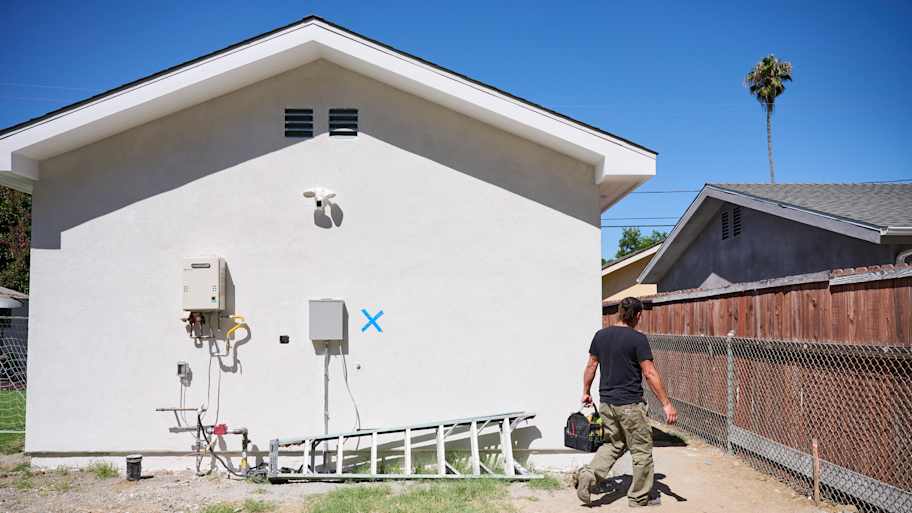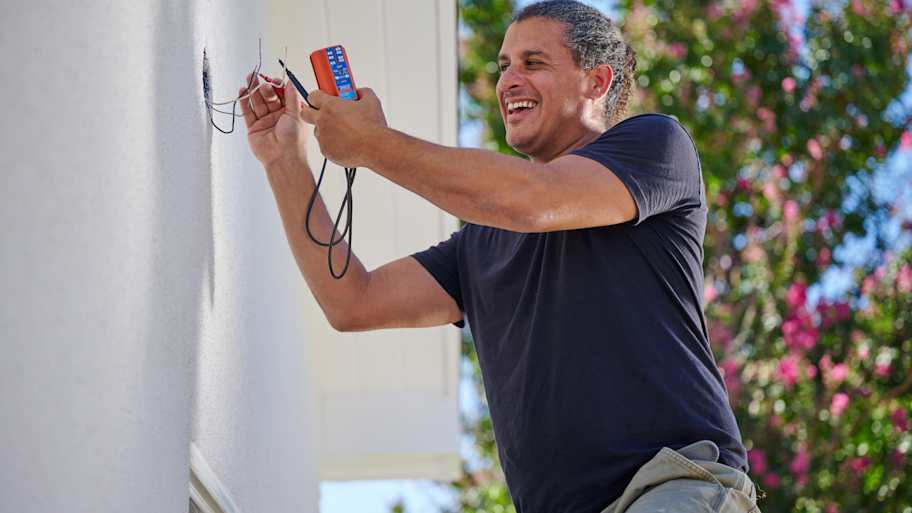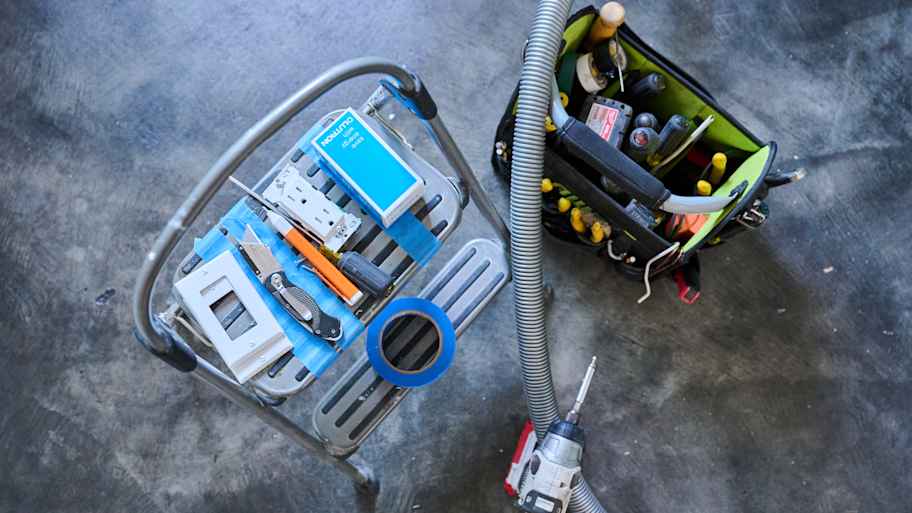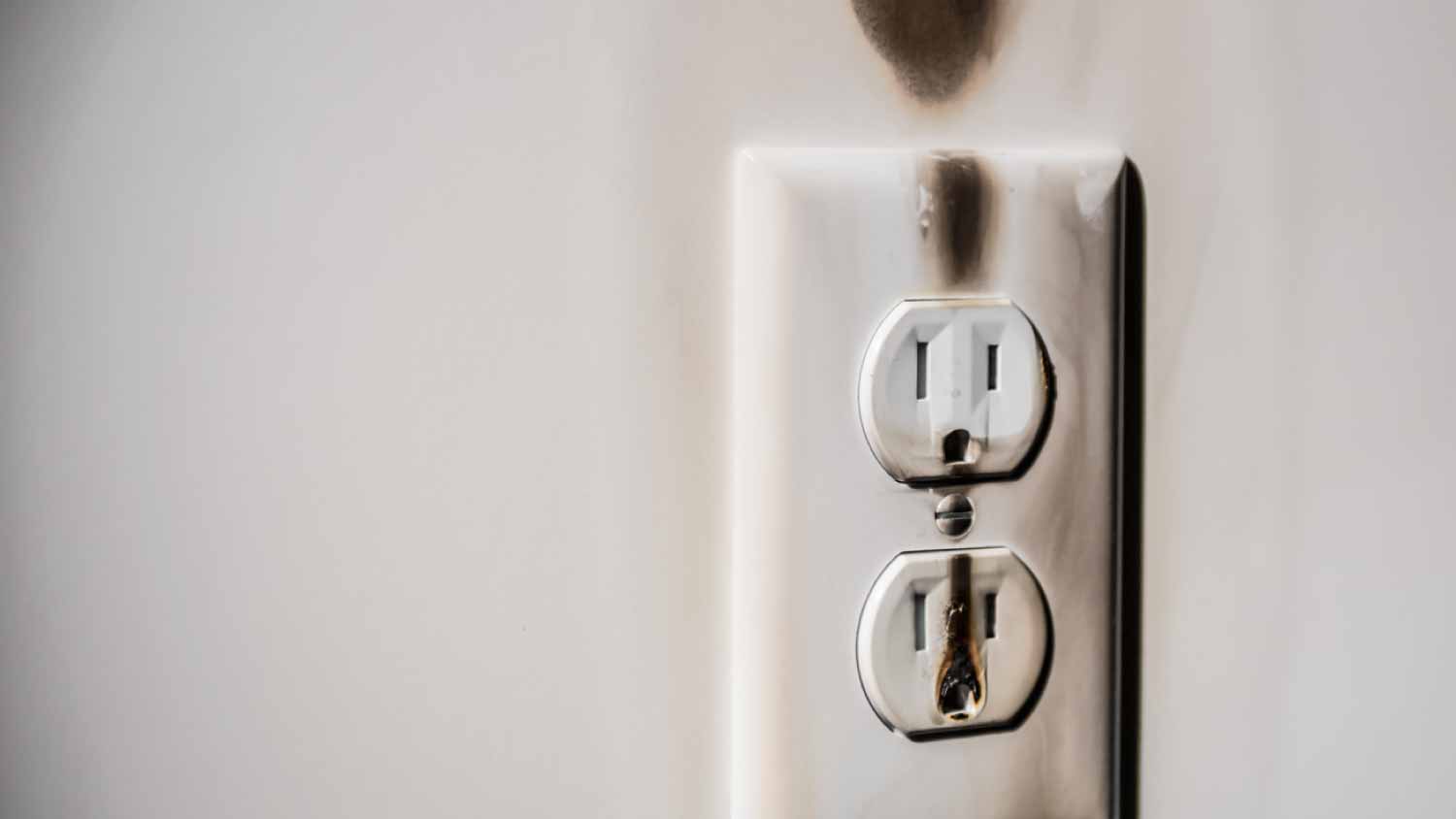Line vs. Load Wire: What’s the Difference?
Here’s what you need to know about these important types of connections


The line wire receives the electricity from the utility company.
The load wire shares that power with other outlets on the circuit.
Line wires are always active, so take proper safety precautions.
Identify wires by their connection points rather than their colors.
It’s vital for your safety as a homeowner and a DIYer to understand the basics of how your home’s electrical system operates. One of the most important things is to learn the difference between line vs. load wires.
Don’t worry; we’ve got you covered. Here’s what you need to know about the distinction between these wire types and how they operate.
What’s the Distinction Between Line vs. Load Wiring?

When electricity is delivered from your utility company, it comes through to your home’s electric panel (breaker box) on the line wire, which is also called the incoming or upstream wire. The electricity gets shared through the load wire—the outgoing or downstream wire—to other devices in your home. There’s always an active electrical current flowing through line wires, so consider them “hot” and behave accordingly.
Let’s consider how this process relates to a wired light fixture in your home. The line wire supplies the power to the light or dimmer switch. Flip the switch on, and the load line sends that power to turn the light on. The load line stops sending that power when the light switch is in the off position.
Line vs. Load Wiring: Connecting to Circuits and GFCI Outlets
Now that we’ve covered the basics of line vs. load wiring, let’s take a closer look at how they interact with circuits and GFCI outlets to power our homes.
Line and Load Wires with Circuits
An electrical circuit is made up of various electrical devices, including outlets, lights, and switches. The line wire connects the electrical panel to the device while the load wire continues from that device to another one downstream. Where it meets that second device, the load wire becomes the line wire.
This process can go on and on, depending on how many outlets or receptacles are connected to that circuit. For ease of reference, remember that the line side is where the power comes in, and the load side is where it emerges and delivers power to other devices on the circuit.
Line and Load Wires with GFCI Outlets
When a ground-fault circuit interrupter (GFCI) outlet is involved, the line and load wires connect in pairs. If there is only a connection to the line terminals, then only that particular outlet has GFCI protection. However, if there is a connection via a pair of cables or pigtail wires to the line and the load terminals, then the GFCI protection extends to other outlets further along on the same circuit.
How to Find the Line and Load Wires

Wondering where to find your electrical panel’s line and load wires? When looking at the breaker box in your home, you’ll see wires at the top and the bottom of the panel. The incoming wires at the bottom are the lines wires, which deliver electricity directly from the power company. The outgoing wires at the top are the load wires, sending power to the connected outlets in your home.
Some electrical systems make it very easy and mark things as line and load. You might also see that the incoming or line wire is attached with a silver screw that’s different from the others. Line wires are typically black while load wires are usually black, red, or blue. If that sounds confusing at best and dangerous at worst, you’d be right. That’s why it’s better to determine which is which by the location of their connection rather than their color.
Additionally, you could use a voltage tester to help you determine the line vs. the load wire. Read the instructions that come with your device. Typically, the voltage pen will glow red when it detects a live wire—that’s the line wire that is always holding electricity at the ready.
Keep in mind that confusion between these two wires can be dangerous, especially when fixing or installing a GFCI outlet. There is an internal circuit breaker, but if it’s installed improperly, this safety backup can fail. In this case, power will only be shut off upstream to the line wire, but it will still be sent to the load wire located downstream, leaving you still at the risk of an electric shock. If you have trouble determining the difference between line vs. load wiring, it’s best to hire a professional electrical wiring and panel service technician to take over your electricity project to ensure it’s done safely and correctly. Otherwise, choosing the wrong wire could have disastrous consequences for your house and safety.
Other Line vs. Load Meanings
Aside from the wires, there are other ways the terms line and load work within your home’s electrical system.
Line describes any parts of the circuit that are powered at full household voltage. This is to distinguish from those circuits that are installed at low voltage because their associated devices need minimal or only occasional power, such as a doorbell or outdoor lights.
Load may also refer to the level of electricity demand—also known as the power draw—of an appliance or device plugged into a circuit. To find the “total load” on a particular circuit, add up the top wattage of every light fixture attached to the circuit. That way, you can tell if a circuit can safely handle every light or device if they were powered on simultaneously.





- Home Generator Repair
- Lamp Repair
- Electric Repair
- Generator Installation
- TV Antenna Services
- Emergency Electricians
- Commercial Electricians
- Attic Fan Installation
- Attic Fan Repair
- Exhaust Fan Installation
- Electric Inspectors
- Subcontractors
- Electrical Construction
- EV Charger Installer
- Chandelier Installation
- Doorbell Installation
- Bathroom Fan Installation
- Ring Installers
- Electrical Panel Upgrade
- Wire Color Code: Decoding Electrical Wire Colors
- How to Distinguish Electrical Wire Types: Your Go-To Chart
- Understanding Wire Gauges: What Gauge Wire Should You Use for Outlets?
- What Does the Neutral Wire Do?
- Brown and Blue Wires: Which Is Positive?
- Is the Black Wire Positive or Negative? How to Tell Electrical Wires Apart
- How to Wire an Outlet From Another Outlet in 9 Steps
- What Is the C-Wire on a Thermostat? Everything You Should Know Before Installation or Repairs
- How To Use a Wire Gauge Amp Chart
- Why Are My Lights Out But the Breaker Is Not Tripped?










